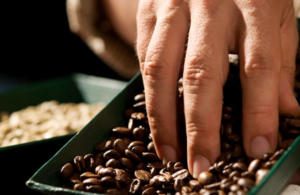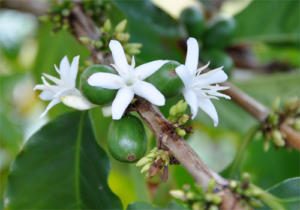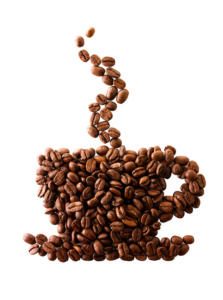| Henriette Jacobsen, TheCostaRicaNews.com Costa Rica produces some of the best quality coffee in the world, which is mostly exported to other countries, so that foreigners can enjoy an excellent brew. However, life as a coffee farmer is above anything, a tough job. We meet Victor Torres, a coffee famer, in front of his pink house in Monteverde, Santa Elena. He greets us with open arms and a smile from ear to ear. We are three visitors today who have paid $30 dollars each to go on a 4-hour coffee tour to get a first-hand experience of how coffee is produced – from the sowing of the coffee beans to the harvesting of the coffee plant and finally to the roasting of the coffee beans. Torres is one of the coffee farmers you can meet on the tour in Monteverde. Apart from the days when he’s showing his farm, Torres works every day from six in the morning until 5 in the afternoon, even though he’s 72-years-old. He’s not thinking of retiring because he doesn’t have a pension; the coffee plantation is his survival. Four families survive from the production of his coffee farm, including his son’s family. “Everything is difficult,” Torres says. The fair trade criteria45 years ago, Torres bought the 35-hectare farm and two cows for $64 dollars. Back then, 32 hectares were forest and only three hectares were ready for farming. Now there are four hectares of forest, 26 hectares for his cattle, and three hectares for crops. Torres and the other families also grow bananas and honey for themselves and the animals. Growing other crops so that they are not only relying on coffee production is one of the criteria they have to fulfill in order to be part of the fair trade brand, Montana Coffee Traders. Torres and the other coffee farmers in Monteverde are all fair trade farmers and sell 50% of the coffee production to the company in Montana where the beans will be roasted, distributed and resold. The rest will be sold locally in Monteverde and a portion of special reserved coffee will go to other countries. In order to be part of the fair trade label, Torres’ coffee plantation can’t grow too big. His coffee plantation is actually so small that he’s making more money from the milk he sells from his 35 cows. He has grown extra forest as a windbreaker to protect the coffee plants and animals from wind. Being a fair trade coffee farmer also means that the farmers won’t use any chemicals with red labels on the crops. Depending on the season, they sometimes use more organic products to fertilize or to prevent harmful fungi. Torres says he only drinks coffee from his own farm because he wants to know how it’s been made. Harvest time is roughNovember to February is harvest time. On Torres’ farm there are roughly 500 plants. Usually 12-16 people harvest everyday during the season, but they need to hire more people in December when the harvest peaks. Each person gets 2 dollars per cajuela. One good plant is one full cajuela, which is 12.5 kilos of red berries and 2.4 kilos ground coffee. Some people are able to harvest 20 cajuela per day. Others, like Torres, harvest eight a day. “That’s because I need longer coffee breaks,” Torres explains. Last year they harvested 5400 kg of red coffee berries at Torres’ farm. The tour ends in Torres’ living room where his wife serves us pancakes and coffee from the farm with milk and sugar. Torres asks us to drink up all the coffee. He won’t get any sleep tonight if there’s any coffee left in the pot.
|  Costa Rica Coffee Facts


|

